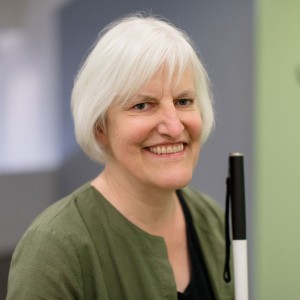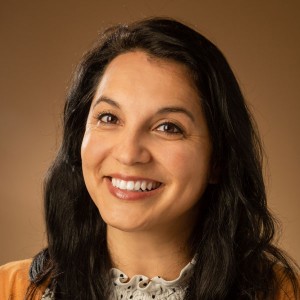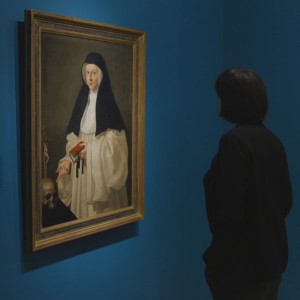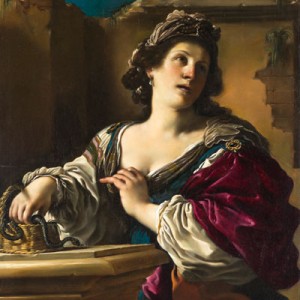Audio: Museum of the Senses: A Conversation with David Howes
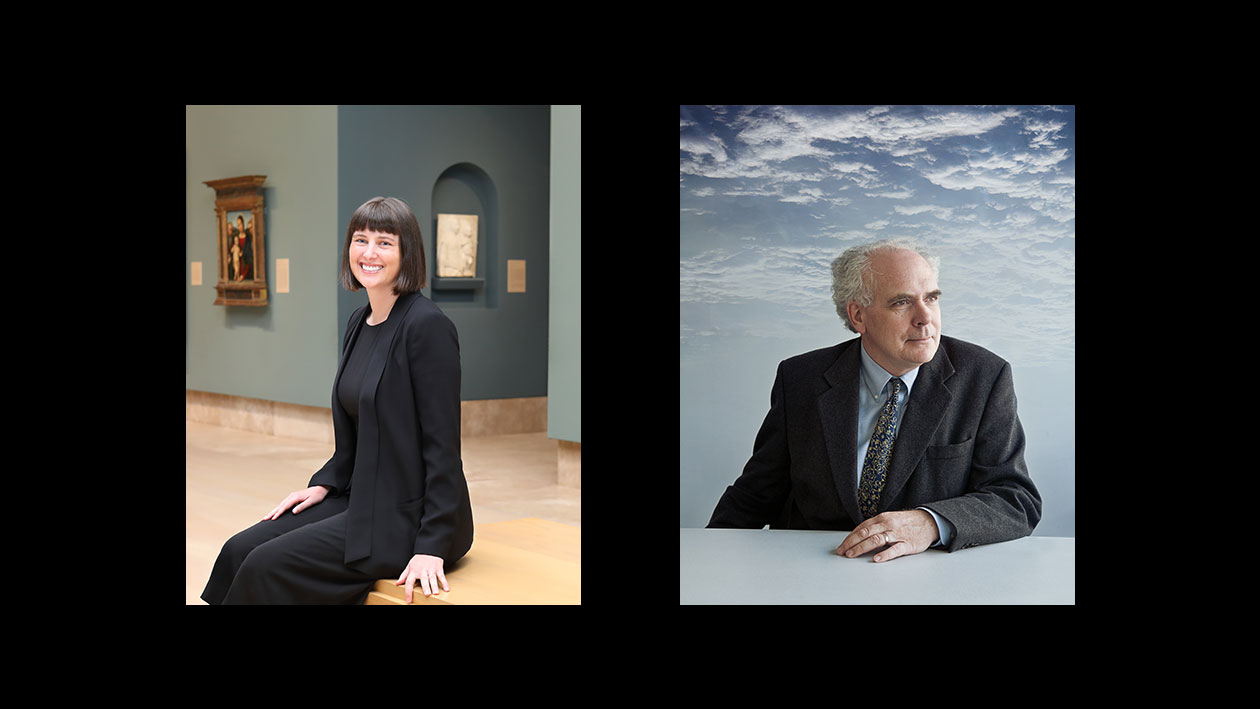
Audio Series: Touching Art: Embodied Experiences in Museums
Featuring three distinguished speakers from the fields of literature and disability studies, anthropology and education, this series of conversations with Assistant Curator Maggie Bell focuses on how the body shapes engagement with works of art. Building on historical themes addressed in the exhibition The Expressive Body: Memory, Devotion, Desire (1400–1750), the series explores questions of sensory perception, empathy and self-reflection in present-day museum encounters.
Museum of the Senses: A Conversation with David Howes
David Howes is Professor of Anthropology, Co-Director of the Centre for Sensory Studies and Director of the Centre for Interdisciplinary Studies in Society and Culture at Concordia University, Montreal. Among his many fields of research, Howes has published on the role of the senses in cultural institutions. In his forthcoming book The Sensory Studies Manifesto: Tracking the Sensorial Revolution in the Arts and Human Sciences (July 2022), Howes explores multisensory practices in early 17th- and 18th-century museums, and the legacy of those practices in museums today.
Related conversations in the series:
- More than Meets the Eye with Georgina Kleege, Professor of English at UC Berkeley
- Learning from the Body with Veronica Alvarez, the Wallis Annenberg Director of Community Arts Partnership at CalArts
Transcript:
Maggie Bell:
My name is Maggie Bell, and I’m an Assistant Curator at the Norton Simon Museum. My current exhibition, The Expressive Body: Memory, Devotion, Desire (1400-1750) explores the physical and emotional impact of representations of the human body, and the historical role of the 5 senses in experiencing works of art. This series of conversations with scholars in the fields of art education, literature and anthropology, brings these themes into the present by addressing the role of the body and the senses in engaging with art today.
Today, I’m delighted to introduce David Howes, who wears several hats as a Professor of Anthropology at Concordia University, Montreal; as the Co-Director of the Centre for Sensory Studies (CSS); and as Adjunct Professor in the Faculty of Law at McGill University. David is also the Principle Investigator for the multi-year interdisciplinary research initiative, Explorations in Sensory Design, which among other contributions, examines the senses as design elements that fundamentally shape experiences of public space. His forthcoming book, The Sensory Studies Manifesto: Tracking the Sensorial Revolution in the Arts and Human Sciences due out in 2022, offers a sweeping account of the history, methods, and scope of sensory studies.
David’s interests are wide-ranging, as is evident in his numerous publications that have explored the cultural life of the senses in a variety of contexts, from museums to marketing to law. In my own research for the Expressive Body exhibition, I was particularly drawn to David’s investigations into the roles of hearing, touch, smell and even taste in museums and similar spaces, which challenge assumptions about the primacy of vision in these institutions.
In thinking about the array of your areas of expertise, anthropology, history, sensory studies, the law, I have two questions. First, what is the connection between the study of law and the study of the senses? Second, and perhaps much more broadly, what is sensory studies?
David Howes:
Well, thank you for these questions and thank you, first of all, for a wonderful exhibition. Though I've only been able to visit online through the video, nevertheless, it's put me in a time period that I love, and appreciated so much your creation of this wonderful collection of objects.
So, I didn't think there was any connection between the study of law and the study of the senses either when I started. But, a few years ago, I got funding for a project on law and the regulation of the senses and discovered the senses are everywhere in law beginning with the image of Lady Justice with the blindfold. What's the blindfold about? What's the scales about? What is the sword about? It's very sensory.
Sensory studies is an area that grew out of what I called the sensory turn or the sensory revolution in the humanities and social sciences in the early 1990s when anthropology and history started turning to the senses both as object of study and means of inquiry, asking questions like, "Has the order of the senses shifted in history? Does it change across cultures? Are there some cultures, for example, that are more ear-minded than others because they are so-called oral cultures? Do literate societies have a visual bias because writing or print appeals more to the eye than any other sense, obviously? But, what kinds of varieties of sensory experience exist both in history and across cultures?"
So, at the Center for Sensory Studies, we have 18 faculty members. They're from a broad array of disciplines: anthropology, sociology, communication studies, art history and design art, and we have one token psychologist as well, and he has to bear the brunt of our many criticisms of his discipline, and he does so very well. He gives as good as he gets. And, there are four main areas to our research. One is the social life of the senses, so, not the mental life of the senses, but the social life, second there is multisensory aesthetics, sensory design and marketing, and, finally, alternative technologies of sensory communication. For example, What are the possible ways in which, for example, this Zoom conversation could have a smell track, could have a taste track? Why have those senses been excluded from our technologies of communication? Can they be put in? How should they be put in?
I'm basically an anthropologist. but I dabble in history, as well.
Maggie:
You raise so many important points that I know we'll get into over the course of the conversation. But, the one that resonates with me the most was, in reading your work and thinking about exhibition, was that the senses are not frozen in time. They're not monolithic for everyone, and that was something I was hoping to convey, is that these works would have been touched and smelled, etc., and that was something that I found so fascinating. Before reading your work, I hadn't actually really thought about a systematic approach to understanding the history of the senses, which feel so ephemeral even now in the present moment. So, I wanted to ask you to speak a little bit more about: how do you do the history of the senses? What kind of evidence do you look for when you're doing that work?
David:
The history of the senses, it seems an impossible task. A sound is here and it's gone. An aroma is here and it's gone. The senses vanish instantly, and so, one really has to develop a special set of skills to investigate them. As an anthropologist, it's comparatively easy. I'm with the people I'm studying, and I can smell and see and taste alongside of them. I can share in the sensible. But, how does a historian do it? Well, there's a couple of techniques. One of those is what we call sensing between the lines of written sources. We all know about reading between the lines, but sensing between the lines is inferring what kind of sensations are behind the descriptions.
In that regard, it's especially good to look at travelers' accounts. Somebody from Germany goes to England, and they will describe all the strange habits of the British, which the British are not aware of because it's just the way they lead their lives. That's sensing between the lines, Going to the places and experiencing them in person is actually very helpful with respect to fleshing out a text. So, if you're interested in the Renaissance, well, you just have to go to Venice and Florence. There's no other way to study them properly. That physical presence can also inform the senses.
Maggie:
I think that's such a nice segue into the productivity or the productive nature of incorporating all five senses and understanding the world. I guess we could look at it in the microcosm of the museum because you've been involved in so many research projects around the museum and the multisensory potential of museums. For instance, you've worked on one called The Sensory Museum, and another, The Hands-On Museum. So, I want to ask, what have you learned about the functions of the senses in museums of the past, and were certain senses privileged over others in the scope of your research on the sensory life of museums?
David:
I sense the sensory life of museums is absolutely fascinating, and it's especially interesting from this archeological perspective. Today, the ideal museum is often referred to as a white cube. It's a purely neutral atmosphere, and this is considered the best way in which to exhibit the paintings and also the sculptures within it through that neutral atmosphere so nothing interferes with or detracts from the art. Also, there's this phenomenal bureaucratization of the senses that goes on in the way, in which, for example, you go to an art gallery or a museum to see, to a concert hall in order to listen, to a restaurant to taste or to dine, and to a gym to exercise.
So, all of these different bodily operations are confined to different contexts, different spaces. By contrast, early museums were sensory gymnasia. There's no other way to put it. I'm thinking of places like The Ashmolean that was established in 1683 in Oxford and other early museums. You find accounts of people hefting all kinds of objects to see just how heavy they are, shaking them to find out if there's anything inside of them, gnawing on them to taste them. Why would they want to taste things, natural items and other items? Well actually, it was because, before Lavoisier, chemistry was a chemical science, and the chemical sense is taste.
David:
I'll also say that, when we think about the artwork that, for example, you've brought together in this wonderful exhibition, that art would not, obviously, have been exhibited in a museum. If it consisted of religious statuary or paintings, it was exhibited in churches.
Typically, as you also note, tapestries were wall-hangings, and many paintings would have hung in dining rooms and galleries of the houses of the nobility. So, it was not the white cube. It was far from it, maybe especially as regards the religious art that you've brought together.
A very interesting example of just this issue was raised when they had the Treasures of Heaven exhibition at the British Museum, and they brought together numerous relics and the beautiful reliquaries within which they were set, and icons from Byzantium and elsewhere in the eastern parts of Europe and put them on display. Now, the visitors included people of the Eastern Orthodox faith, and, in that faith, the proper way in which to venerate an icon is to kneel before it, to pray before it and to kiss it.
Now, was the British Museum going to allow visitors to kiss this exhibition, the items in this exhibition? Or actually, shouldn't the British Museum have obliged everyone to do so? Merely viewing such icons from a distance and not engaging in that sensory interaction with them would be to defeat their sensory presence, their way of being in the world. And so, I would love to see more experimentation with historically appropriate manners of viewing.
Maggie:
It's really a great and exciting challenge for museums to think about how to present these works in, as you say, some culturally specific way that unlocks their meaning in ways that the museum as it is now just can't, that it isn't doing.
David:
I think that our sense of vision is very disincarnate, which may have something to do with the nature of vision itself. But as you bring out, people, from a glance, could be affected by paintings. A couple that wanted a lovely child should look at a painting of a handsome couple or this kind of thing, that there were all kinds of ways in which sight had a tactile dimension. Now, site still has a tactile dimension. Somebody can look at you “with daggers.| Or, "If looks could kill," these are expressions that still survive. But, I think they had a materiality during the period that you are you looking at that we need to really appreciate more fully.
Maggie:
That's such a good point about looks could kill, looking with daggers. I love that. I didn't make that connection before, but these constructions persist today in lots of ways that I find really interesting, that this sterilization and segregation of the senses happened on these institutional levels. But, it seems like, in practice, there's still quite a bit of fluidity in day-to-day life.
David:
I think there is, and, really, I think that, too often, there is this kind of sterilization that goes on and separation. Zoom conferences are a prime sign of that. And COVID, the way it targets taste and smell, how insidious is that? We've been deprived more than ever of our corporeal senses in the last while. How do we bring them back, and what kind of experiments should we do in order to bring them back? Here, I think art museums have a great role to play, and, one of the reasons is that we've expanded the definition of art in all kinds of interesting ways.
Maggie:
I agree. I think that this moment is such an important one in which to explore how art museums can connect people with their bodies and with each other. So, in that vein of trying to find successful ways to do this, I wonder if you could point us in the direction of projects that you've seen that have done this really well.
David:
One I will just start off with is, at the Toledo Museum of Art, they offer baby tours. I think this is actually not so much for the benefit of the toddlers as for their moms or caretakers who have a chance to socialize, but the idea is: get them while they are young. Get them going to museums really young. The other thing is that it is mostly children's museums and science museums that, for example, have had a strong hands-on component. Now, I'm a little bit worried about that.
The reason that you reach out to children through the sense of touch is because touch is supposed to be an infantile sense. It's less valued than sight. As you grow up, you should grow out of touch and into sight. Well, wrong! Why do we value sight and touch in that way? Why not reverse it, and why not think that tactile sophistication, tactile literacy is important? The idea of, "Well, you can reach children through the sense of touch because it's a more primitive sense," this is just wrong. Actually, how can we develop the sense of touch more fully in that regard? I was always very impressed by the handling tables at The British Museum.
In the Enlightement Gallery at the British Museum, you have all of these treasures, specimens and so forth in glass cases, but you also have this handling table where a docent, at 4:00 each afternoon, will bring out a series of objects, and visitors can handle them. One of the times I was there, there was a little figurine of Ganesh, the elephant god of Hindu religion. There was a bit of wrapping from a mummy, and everybody wanted to touch that for the ghoulish reasons of I don't know what. There was also a carved wooden pig that was used as a token of exchange in Micronesia. And, there was this hand ax from the Pleistocene era. And so, we were encouraged to make these very creative associations between that object and objects in our everyday life.
Maybe I can just say a word about what we've been doing at The Center for Sensory Studies. We design what we call performative sensory environments. These are like exhibitions, but without any objects, only qualia, only sensations. And so, in one instance, we sought to simulate the synesthetic cosmology of the Desana people of Columbia who ingest hallucinogens and ascribe great truth and value to those hallucinations. And so, there was a soundtrack and there was a light track and there were things to smell. There were things to taste. There was a revolving platform and there was fog. The idea was to create a symphony of sensations that would, in some ways, emulate the transposition, from one sense to another, of sensations under the influence of a hallucinogen when you see a drumbeat or you hear a color.
More recently, we've been working together with Indigenous artists from Canada and from Australia to create performative sensory environments that will communicate something of what it is to be on the other side of a treaty, what it is to be an indigenous person in the dominant society and communicating something about the pain, but also about the other ways of sensing that indigenous communities have.
So, these are, in a way, laboratories like psychology laboratories, but they're aesthetic laboratories where we're combining the senses in new kinds of ways and trying to create conditions for cross-cultural communication. So, it's that idea of art as experience and using the senses to promote that experience.
Maggie:
Can you share maybe an experience that you've had with a work of art or with a museum space that has been multisensory that has been meaningful?
David:
I guess, first of all, I would point to our performative sensory environments. I find them wonderfully stimulating. They are created by Chris Salter. They go on tour. One time, one of them ended up in Berlin, and my job as an anthropologist is to interview people after they've been through one of these experiences. They would last for about 20 minutes where there are no labels. There are no frames. There's just this swirl of impressions. People come out of it making all kinds of free associations. What we try and do is both find out where it's taken them. But also, we use that information to actually improve the experience for the next time we do the installation. So, that's one experience that I think is really key.
Another thing that I was thinking about was an experience I had at the Rijksmuseum, which was of a very interesting project. They had made a 3D print of Rembrandt's The Jewish Bride. It's a beautiful painting, and they had made a 3D print of it. It was bas relief. It wasn't completely in the round, but you could feel the scratchiness of the clothing. You could feel the roundness of the pearls. And so, in that regard, it was a lifelike three-dimensional model of a two-dimensional representation. Is this the way to go? Because, we could do 3D prints of everything in the collection.
To me, I wasn't sure because, first of all, Rembrandt was famous for being a sculptor of paint. He applied the paint so thick that it was almost three-dimensional already to begin with. He used his fingers sometimes because, actually, that direct impression of the fingers that is there.
And so, when there's so much tactile richness to Rembrandt, have we done that evocative quality of his painting style an injustice when we have modeled it in 3D? Should we? Is that not the way to go? I think that there'll be so many technological geniuses out there. That's the way they want to go. They make everything into a 3D printout. But, to me, it would be understanding the importance of touch to Rembrandt, which is only what an art historian can do. You need the skill to read the sources to get at that kind of information, and there's just no other way to do it.
Maggie:
Thank you, David, so much for joining us. This was such a wonderful conversation, and has given me and, I think, all of our listeners so much to think about moving forward about our experiences in museum spaces and with works of art from a multisensory perspective. Thank you so much.
David:
Absolutely, my pleasure. I think it's so important what you're doing with this exhibition on the expressive body, and I think that we have to cultivate our sensory capacities so that we can be as expressive, as communicative as the bodies, the sculptures and the paintings that you've brought together for the exhibition. This should be the challenge of art, to actually perfect our perceptions, so thank you.
Maggie:
Thank you.
This conversation is part of the series Touching Art: Embodied Experiences in Museums produced in conjunction with the Norton Simon Museum’s exhibition The Expressive Body: Memory, Devotion, Desire (1400–1750), on view October 15, 2021 through March 7, 2022.
Additional conversations with Veronica Alvarez, the Wallis Annenberg Director of Community Arts Partnership at CalArts, and Georgina Kleege, Professor of English at UC Berkeley, are available at nortonsimon.org.



